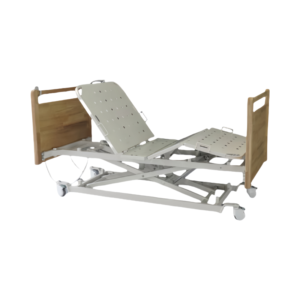When it comes to purchasing a nursing bed, selecting the appropriate size is essential for both comfort and safety. Here are some critical factors to consider when determining the right size:

1. Consider Body Type
Start by assessing the height and weight of the individual who will be using the bed. Comfort should always be the top priority.
- For Taller Individuals:
If the user is tall, it’s advisable to choose a bed width between 120 cm and 150 cm. This provides ample space for comfort and ease of movement. - For Shorter Individuals:
For shorter users, a standard nursing bed width of 90 cm or 100 cm is often recommended. A narrower bed can make it easier for the elderly to enter and exit, reducing strain, particularly at night. This helps prevent situations where their feet cannot touch the ground while sitting on the bed.
Additionally, bed height should be considered.
- Adjustable Height:
Opt for a three-function electric bed that allows for electric height adjustments. This feature accommodates various scenarios and meets diverse care needs. If a height-adjustable bed isn’t preferred, consider models with adjustable legs for customization based on user feedback.
2. Assess Health Status
The width of the bed is closely linked to the care needs of the elderly user.
- For Independent Seniors:
Active seniors may choose the width based on personal preference. - For Semi-Dependent or Dependent Seniors:
When selecting a bed size for users needing assistance, consider the space necessary for transferring and repositioning.For transferring patients, especially those who are heavier or unable to rise independently, the bed width should allow enough room for a caregiver on both sides. Ideally, the width should not exceed 120 cm. For repositioning, a standard width of around 120 cm is comfortable for typical weight patients. Specialized turning beds typically do not exceed 100 cm.
